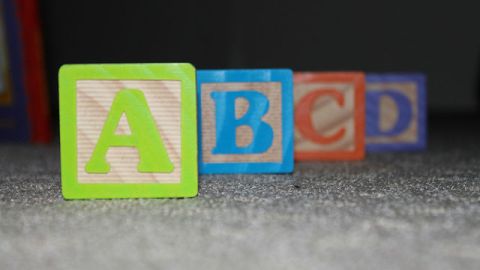The War on Teachers?

This article is part of Re:EDUCATION, an ongoing series on educational innovation.
Like religion and politics, public education may soon be one of those subjects banned from the dinner table for the sake of family harmony. Few issues can boast so many deeply committed stakeholders with so many intensely opposing points of view. Two recent Big Think features on school reform in New Jersey, under Acting Commissioner Chris Cerf, elicited an unusually high number of passionate reader responses, many of them critical of what have become the mainstream axes of school reform: teacher accountability, data-driven evaluation of school success, and the expansion of the charter school system.
Joanne Barkan, who writes for Dissent Magazine, sees serious flaws in the “school reform” movement that went national with the 2001 enactment of No Child Left Behind, under President George W. Bush. The following are excerpts from her article “Firing Line: The Grand Coalition Against Teachers.”
In a nation as politically and ideologically riven as ours, it’s remarkable to see so broad an agreement on what ails public schools. It’s the teachers. Democrats from various wings of the party, virtually all Republicans, most think tanks that deal with education, progressive and conservative foundations, a proliferation of nonprofit advocacy organizations, right-wing anti-union groups, hedge fund managers, writers from right leftward, and editorialists in most mainstream media—all concur that teachers, protected by their unions, deserve primary blame for the failure of 15.6 million poor children to excel academically. They also bear much responsibility for the decline of K-12 education overall (about 85 percent of all children attend public schools), to the point that the United States is floundering in the global economy.
In the last few years, attention to the role of public school teachers has escalated into a high-profile, well-financed, and seriously misguided campaign to transform the profession based on this reasoning: if we can place a great teacher in every classroom, the achievement gap between middle-class white students and poor and minority students will close; all students will be prepared to earn a four-year college degree, find a “twenty-first-century job” at a good salary, and help to restore U.S. preeminence in the world economy.
Some Necessary Context
Research shows that teachers are the most important in-school factor determining students’ academic performance. But they are not the only in-school factor: class size and the quality of the school principal, for example, matter a great deal. Most crucially, out-of-school factors—family characteristics such as income and parents’ education, neighborhood environment, health care, housing stability, and so on—count for twice as much as all in-school factors.
Ed reformers have only one response to this reality: anyone who brings up out-of-school factors such as poverty is both defending the status quo of public education and claiming that schools can do nothing to overcome the life circumstances of poor children. The response is silly and, by now, tiresome. Some teachers will certainly be able to help compensate for the family backgrounds and out-of-school environments of some students. But the majority of poor children will not get all the help they need: their numbers are too great, their circumstances too severe, and resources too limited.
What’s the Significance?
The reformers’ plan to improve teaching hangs on the notion of annual teacher evaluations based heavily on student test scores. But if this process isn’t consistently accurate, it will hurt children as well as teachers: it will misidentify good and bad teachers (should “good” be defined as good at test prep in any case?), get the wrong ones fired, demoralize entire staffs, and discourage talented people from entering the profession.
So far, the consensus judgment of the research community is not positive. Experts at the National Research Council of the National Academy of Sciences, the National Academy of Education, RAND, and the Education Testing Service have repeatedly warned policy makers against using test scores to measure teacher effectiveness. The calculations require “value-added modeling” (VAM, complex mathematical models to control for in-school and outside factors that influence individual test scores over time so that teachers can be compared) and carefully calibrated tests. In a 2009 report to the U.S. Department of Education, the Board on Testing and Assessment of the National Research Council wrote, “Even in pilot projects, VAM estimates of teacher effectiveness that are based on data for a single class of students should not be used to make operational decisions because such estimates are far too unstable to be considered fair or reliable.”
Yet reformers have not only made this approach the cornerstone of their project, they’ve successfully sold the idea to politicians across the country who are rushing to write it into state laws. And the public is going along—with practically no one confronting how seriously VAM will narrow the curriculum. It’s doubtful that many of VAM’s non-expert promoters could describe the modeling methods. VAM has the appeal of being mathematical, complex, and data based. It’s the kind of technical fix that sounds convincing; it readily wins hearts, not minds.
John Ewing, president of Math for America (which promotes better math education in public high schools), describes the VAM phenomenon in “Mathematical Intimidation: Driven by the Data” (Notices of the American Mathematical Society, May 2011):
People recognize that tests are an imperfect measure of educational success, but when sophisticated mathematics is applied, they believe the imperfections go away by some mathematical magic. But this is not magic. What really happens is that the mathematics is used to disguise the problems and intimidate people into ignoring them—a modern, mathematical version of the Emperor’s New Clothes….
Of course we should hold teachers accountable, but this does not mean we have to pretend that mathematical models can do something they cannot….In any case, we ought to expect more from our teachers than what value-added attempts to measure.
Read the Full Article at Dissent Magazine, here . . .





